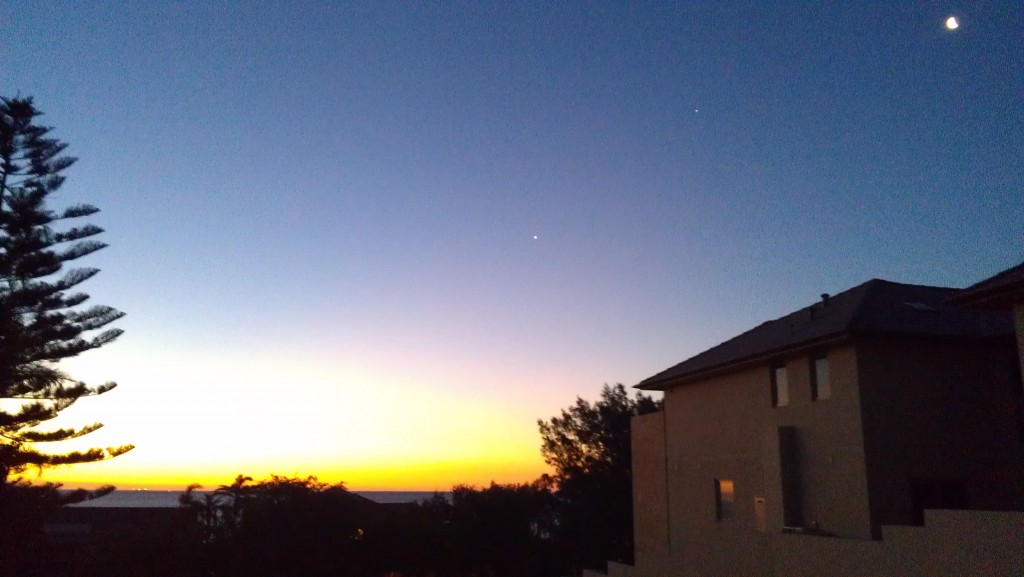Recently, we moved to Perth. One of the highlights of the late afternoons here has been watching the sunsets over the Indian Ocean. Another prominent feature of the evening sky are the bright points of light chasing the sunset: mercury, venus, mars, jupiter and saturn all lined up with the moon recently and it was possible to watch them pursue the sun over the horizon one by one through the course of the evening. Jupiter’s gone from the sky now, a trick of trigonometry between its orbit and Earth’s has put it on the other side of the sun, which just leaves Venus. Venus has been chasing down the sun over the last few months and is now only a few minutes behind sunset. On June 6th, it will perform a transit across the disc of the sun, a feat that will not be repeated within our lifetimes: December 11th 2117.
The transit of Venus is significant because it was used to solve one of the great unanswered questions of the 18th and 19th centuries: just how big is our solar system? Astronomers had mapped the orbits of the planets and produced a set of ratios, so knew just how many times larger Jupiter’s orbit was than Earth’s, but lacked any way of knowing the absolute distance of one orbit (and hence, by inference, the distances of all remaining orbits). In 1768, the Endeavour was dispatched from England to sail to Tahiti to observe the transit of Venus the following year and answer this question. In command of the voyage was Captain James Cook, with orders to go, boldly (they didn’t split infinitives back then), discover strange new lands and new civilisations and be ready with a solar observatory up and running in the newly discovered island half a planet away from home by June 1769. It was an undertaking comparable to a mission to the moon and the construction of the Large Hadron Collider all rolled into one. The canny Yorkshireman made it with most of his crew intact and a month to spare.
The maths is fairly simple, as Edmund Halley worked out in 1716, providing you can get an accurate timing for the start and the end of the transit. If you can do this for widely separated points on the earth you can work out by the principle of parallax the angle formed by the line between Earth and Venus, and so get the distance between the planets. Cook’s mission was ostensibly to make the most accurate timing he could from the greatest possible distance to ensure the largest parallax. It turned out that, of the 76 places on the planet that the transit was viewed from, the rate of error in the observations swamped any chance of getting an accurate result. That would have to wait 120 years for the next transit.
Significantly for those of us living Down Under, Cook then opened his secret orders which directed him westwards to discover the great unknown land rumoured to exist there. He went on to make a full circumnavigation of New Zealand before heading further west to strike land at Botany Bay, in what is now Sydney, New South Wales. A wealth of new botanical discoveries, a timing of the Venusian transit, the first accurate maps of New Zealand and the Australian east coast, all in a secondhand converted coal ship… not a bad effort.
Living in WA, the transit will start at around 6am, so will already be underway at dawn. The east coast will be able to observe all of it, from 8am until about 2.30pm. So, in honour of the occasion, I’m going to repeat Cook’s epic experiment from the comfort of my own balcony. I don’t have a flashy telescope, and direct observation of the sun is definitely out, so it will have to be through a pinhole camera set-up using household items. It may be a bit of work, but then again: last chance to see…
A useful link to the 2012 transit of venus is here.


No comments yet
Comments feed for this article